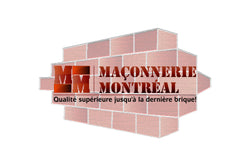How Can Paving Stones Be Used for Drainage Solutions? (Guide 2024)
Paving stones are much more than just a landscaping option for enhancing your outdoor spaces. They can also play a crucial role in managing rainwater and drainage issues. In this 2024 guide, we will explore how paving stones can be innovatively used to address drainage problems while adding an aesthetic touch to your property. At Maçonnerie Montréal, we are masonry experts, and we're here to show you how paving stones can be an effective drainage solution in Montreal, Laval, Longueuil, the South Shore, and the North Shore.
Paving Stones and Drainage: A Winning Combination
Paving stones, also known as pavers, offer a versatile and aesthetically pleasing material for landscaping. They are commonly used to create driveways, patios, walkways, and sidewalks. But did you know that they can also help solve drainage issues? Here's how:
1. Permeability of Paving Stones
Paving stones are made up of small concrete or stone units arranged tightly. However, between these units, there are tiny spaces that allow water to seep into the ground. This means that when it rains, a significant portion of the water is absorbed by the soil below, reducing the risk of flooding. Water naturally infiltrates through the joints of the paving stones, acting as an efficient drainage solution.
2. Creating Slopes and Channels
Smart paving design can include subtle slopes to direct water towards gutters or drainage areas. Pavers can be installed to promote the flow of water in a specific direction, diverting it away from your home and foundations. This can be particularly important in areas prone to heavy rainfall, such as Montreal, Laval, and surrounding areas.
3. Permeable Paving Stones
If you want to go even further in managing rainwater, you can opt for permeable paving stones. This variant is specially designed to maximize permeability, allowing water to pass through the paving stones and infiltrate directly into the soil. This significantly reduces the risk of stagnant water and puddles.
4. Combining with Retention Basins
In some situations, it may be wise to combine paving stones with retention basins. These are designed to collect excess rainwater and store it temporarily. The water is then gradually released into the ground or controlled drainage systems. This approach can be particularly useful in areas where natural drainage is limited.
5. Pattern Choices for Optimal Drainage
When designing your paving stone project, you can choose from a variety of patterns, including herringbone, fan, circular, and many others. These patterns can be used to create subtle channels that guide water to designated drainage areas.
Practical Examples:
-
Paving Stone Driveway: By gently sloping the driveway towards the gutter, rainwater is directed away from the house, avoiding flooding issues near foundations.
-
Permeable Paving Stone Patio: Using permeable paving stones for the patio allows rainwater to naturally seep into the ground, preventing water puddles.
-
Paving Stone Walkways: Expertly paved walkways can be designed with subtle slopes to direct water towards street drains.
Trust Masonry Professionals
While paving stones can offer effective drainage solutions, it's essential to enlist the services of masonry professionals to ensure proper installation. At Maçonnerie Montréal, we have extensive experience in designing and installing paving stones to address drainage issues in Montreal, Laval, Longueuil, the South Shore, and the North Shore.
Conclusion
Paving stones are much more than just a flooring material. They can be a powerful ally in managing rainwater and drainage problems. By intelligently selecting your paving stone design and consulting masonry experts, you can not only enhance your property's aesthetics but also safeguard your home from potential flooding. At Maçonnerie Montréal, we are ready to assist you in creating innovative drainage solutions with paving stones. Contact us today to discuss your project.

